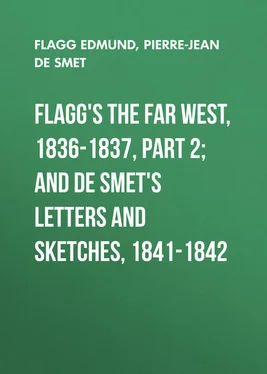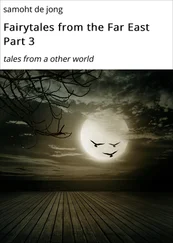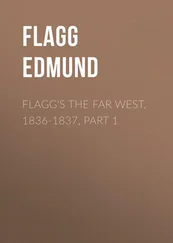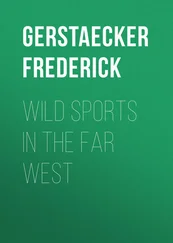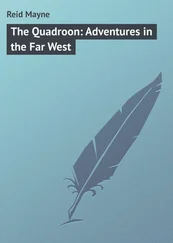Edmund Flagg - Flagg's The Far West, 1836-1837, part 2; and De Smet's Letters and Sketches, 1841-1842
Здесь есть возможность читать онлайн «Edmund Flagg - Flagg's The Far West, 1836-1837, part 2; and De Smet's Letters and Sketches, 1841-1842» — ознакомительный отрывок электронной книги совершенно бесплатно, а после прочтения отрывка купить полную версию. В некоторых случаях можно слушать аудио, скачать через торрент в формате fb2 и присутствует краткое содержание. Издательство: Иностранный паблик, Жанр: foreign_antique, foreign_prose, на английском языке. Описание произведения, (предисловие) а так же отзывы посетителей доступны на портале библиотеки ЛибКат.
- Название:Flagg's The Far West, 1836-1837, part 2; and De Smet's Letters and Sketches, 1841-1842
- Автор:
- Издательство:Иностранный паблик
- Жанр:
- Год:неизвестен
- ISBN:нет данных
- Рейтинг книги:4 / 5. Голосов: 1
-
Избранное:Добавить в избранное
- Отзывы:
-
Ваша оценка:
- 80
- 1
- 2
- 3
- 4
- 5
Flagg's The Far West, 1836-1837, part 2; and De Smet's Letters and Sketches, 1841-1842: краткое содержание, описание и аннотация
Предлагаем к чтению аннотацию, описание, краткое содержание или предисловие (зависит от того, что написал сам автор книги «Flagg's The Far West, 1836-1837, part 2; and De Smet's Letters and Sketches, 1841-1842»). Если вы не нашли необходимую информацию о книге — напишите в комментариях, мы постараемся отыскать её.
Flagg's The Far West, 1836-1837, part 2; and De Smet's Letters and Sketches, 1841-1842 — читать онлайн ознакомительный отрывок
Ниже представлен текст книги, разбитый по страницам. Система сохранения места последней прочитанной страницы, позволяет с удобством читать онлайн бесплатно книгу «Flagg's The Far West, 1836-1837, part 2; and De Smet's Letters and Sketches, 1841-1842», без необходимости каждый раз заново искать на чём Вы остановились. Поставьте закладку, и сможете в любой момент перейти на страницу, на которой закончили чтение.
Интервал:
Закладка:
The road from Cahokia to the city, inasmuch as it is not often conscious of a more dignified equipage than the rude market-cart of the French villager, is of no wonderful celebrity for breadth, or uniformity of track, or excellence of structure. It extends along the bank of the Mississippi, and is shaded on either side by the strip of forest which skirts the margin. After a tarry of several hours at Cahokia, and an excursion among the mounds of the neighbouring prairie, near sunset I found myself approaching "Illinois-town," opposite St. Louis. 79It was the calm, soft evening hour; and, as I now advanced briskly over the prairie, the cool breeze was whispering among the perfumed grass-tops, and "night's silvery veil" was slowly gathering along the retreating landscape. The sun went down like a monarch, robed in purple, and the fleecy clouds which had formed his throne rolled themselves in rich luxuriance along the horizon, suffused in the beautiful carmine of the heavens. At intervals an opening in the forest laid bare the scene of splendour as I hastened onward, and then all was dusk again. Winding among the group of mounds reposing in the deepening twilight, and penetrating the grove of pecans, the moon was just beginning to gild the gliding wave at my feet as my horse stood out upon the bank of the stream. Clear and distinct beyond, against the crimson back-ground of the evening sky, were cut the towers, and cupolas, and lofty roofs of the city; while in front, the lengthened line of white warehouses gleamed from the shade along the curving shore: and the eye, as it glanced up the far-retreating vistas of the streets, caught a glimpse of deeper glories along the narrow zone of horizon beyond. The broad sheet which I was now crossing seemed, with the oily gliding of its ripples, completely died in the tender roseate of the sunset sky. As the shades of evening deepened into night, one after another these delicate hues faded gently away: and the moonlight streamed in full floods of misty magnificence far over the distant forests; the evening-bells of the city pealed out merrily over the waters; the many lights of the steamers cheerfully twinkled along the landing; and, as the last faint glimmer of day had gone out, and night had resumed her sable reign, I found myself once more amid the "crowd and shock of men," threading the long, dusty streets of St. Louis…
Gentle Reader, the tale is told – our task is ended —
"And what is writ, is writ;
Would it were worthier!"
Our pilgrimage is over, fellow-wanderer. Full many a bright day have we trod together the green prairies, and glided over the far-winding waters of the fair Valley. Together have we paused and pondered beside the mysterious mausoleum of a race departed. We have lingered among the time-stained dwellings of an ancient and peculiar people, and with kindling interest have dwelt upon the early chronicles and the wild legends of the "far off," beautiful West. But autumn is upon us – shadowy autumn, dark on the mountain-brow. Her purple mistiness is deepening over the distant landscape; and the chill rustle of her evening wind, in melancholy whisperings, wanders among the pennoned grass-tops. Our pilgrimage ceases, yet with no unmingled emotions do I say to thee " pax vobiscum !"
"Ye! who have traced the Pilgrim to the scene
Which is his last, if in your memories dwell
A thought which once was his, if on ye swell
A single recollection, not in vain
He wore his sandal-shoon and scallop-shell:
Farewell!"
St. Louis, Oct. , 1837.
PREFACE
To those who love their country, and their fellow men, we present this interesting Narrative, with the hope, we might say, the certainty, that its perusal will afford them some moments of the purest gratification. We have seldom met any thing more entertaining. Its simple, manly eloquence enchants the attention. The facts it makes known to us of the "far, far West," the dispositions and habits of the Indian Tribes who roam over the vast region of the Oregon, their present state and future prospects, are such as cannot fail to awaken lively interest in all who love to look around them beyond the narrow horizon of every-day scenes, and learn what the holy servants of God are doing for His sake and in His name in distant parts of the world. We have conversed with the apostolic man from whose pen we receive this narrative; and as we listened we felt at once honoured and delighted to be so near one who in our days and in his own person brings before us that lofty spirit of missionary devotedness – those thrilling scenes of Indian life and adventure which we so much admire in the pages of Charlevoix and Bancroft.
Truly our country is full of interest to those who watch its progress, and compare it with the past. Who, for example, could have dreamt that the Iroquois, the savage Mohawk, – under which name we best know the tribe, and whose startling yell so often made our forefathers tremble, – would have been chosen to kindle the first faint sparks of civilization and Christianity among a large portion of the Indian tribes beyond the Rocky Mountains? This is one of the singular facts which these pages present to us. They abound in others not less singular and interesting. Many of these Indian nations actually thirst after the waters of life – sigh for the day when the real "Long Gown" is to appear among them, and even send messengers thousands of miles to hasten his coming. Such longing after God's holy truth, while it shames our colder piety, should also enflame every heart to pray fervently that laborers may be found for this vast vineyard – and open every hand to aid the holy, self-devoted men, who, leaving home and friends and country, have buried themselves in these wilds with their beloved Indians, to live for them and God. One of their favourite plans at this moment is to introduce among them a taste for agriculture, with the means to pursue it. They believe it to be the speediest, perhaps the only way by which the Indians may be won from the wandering life they now in general lead and from the idle habits it engenders. To aid them in this philanthropic object is our sacred duty as men, as Americans, as Christians. It is at least one method of atonement for the countless wrongs which these unfortunate races have received from the whites. We should be grateful to have such an opportunity of doing good: let none suffer the occasion to pass unhonoured by some tribute to the noble cause – some evidence of their love for God, their country and their fellow man.
The frontispiece is from the pencil of one of the Indian Missionaries.
It blends the skill of the artist with the fancy of the poet, and will hardly be understood without a word of explanation. In the foreground we see several of the gigantic trees of the Oregon forests, fallen and crossing each other. On these repose two wolves, a squirrel and several serpents. Above, two Indian chiefs, surnamed in baptism after the great Apostles of the Gentiles, Peter and Paul, are supporting a large basket of hearts, – an offering to heaven from the grateful wilderness. On the right are the emblems of Indian life and warfare: the bow and arrows, battle-axe and shield. Below and above these are seen some of the most remarkable animals of the country – the bear, the wild horse, the badger, the graceful antelope, intermingled with the plover, the pigeon, the wood-cock, the bittern, and other birds of the region. On the left are the peaceful symbols of Christianity – the Bible and the Cross, the chalice and altar lights – the anchor, symbol of faith and hope – the trumpet, to proclaim the word of God and bid the desert bless His holy name. Here too we behold several of the noble animals of the territory – the buffalo, the deer and elk, the mountain sheep and different birds. In the distance are seen on the right, Indian mounds, and a water-spout rising from the river Platte, and on the left, the Rocky Mountains surmounted by the Cross. Festoons, composed of the various flowers the Fathers have met on their way over mountains and prairies and through lonely vallies, complete the picture – the whole supported at the extremities by different birds of the country, and in the centre by the American eagle, – fit emblem, we may say, of their own dauntless faith, as well as of the heroic spirit of the nation within whose borders they have their principal station, and from whose genuine piety they have received the most consoling assurances of final success, viz: the Flat Head Indians and the Pends-d'oreilles, who are styled, even by their foes, the "nation of chiefs."
Читать дальшеИнтервал:
Закладка:
Похожие книги на «Flagg's The Far West, 1836-1837, part 2; and De Smet's Letters and Sketches, 1841-1842»
Представляем Вашему вниманию похожие книги на «Flagg's The Far West, 1836-1837, part 2; and De Smet's Letters and Sketches, 1841-1842» списком для выбора. Мы отобрали схожую по названию и смыслу литературу в надежде предоставить читателям больше вариантов отыскать новые, интересные, ещё непрочитанные произведения.
Обсуждение, отзывы о книге «Flagg's The Far West, 1836-1837, part 2; and De Smet's Letters and Sketches, 1841-1842» и просто собственные мнения читателей. Оставьте ваши комментарии, напишите, что Вы думаете о произведении, его смысле или главных героях. Укажите что конкретно понравилось, а что нет, и почему Вы так считаете.
